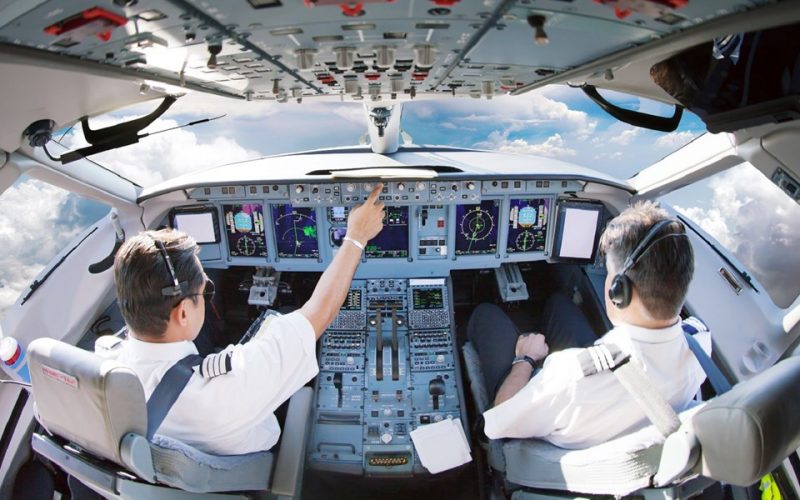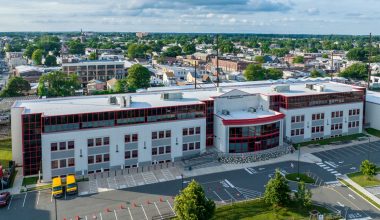Becoming an A-Level pilot is an ambition that requires dedication, skill, and a strong foundation of education. You will have to meet some specific qualifications to become an A-level pilot.
These prerequisites serve as the bedrock of one’s journey into aviation. In essence, they are the fundamental criteria that aspiring pilots must fulfill before taking flight.
Even though pilot training is quite expensive and the aviation sector is unpredictable, if you’re interested in a career in aviation, you need to learn how to become an a level pilot.
This blog post will explore the qualifications necessary to embark on this exciting career path and address common queries about A-Level pilots.
Table of contents
- What Qualifications Do You Need to Become an A-Level Pilot?
- Do I Need a College Degree to Become an A-Level Pilot?
- What Skills Are Essential for A-Level Pilots?
- How Long Does It Take to Become an A-Level Pilot?
- How Much Do Pilots Make?
- How Does A Pilot Progress In The Career?
- What Is The Difference Between Airline Pilots And Commercial Pilots?
- FAQs On A-Level Pilot
- Conclusion
- References
- Recommendations
What Qualifications Do You Need to Become an A-Level Pilot?
To become an A-level pilot, you need to satisfy the following qualifications:
1. Educational Background
To become an A-Level pilot, you’ll need a solid educational foundation. Typically, this includes a high school diploma or equivalent qualification.
Mathematics and physics are crucial subjects, as they form the basis for understanding flight principles, navigation, and aerodynamics. A strong grasp of these subjects will give you a competitive edge during your pilot training.
2. Private Pilot License (PPL)
Becoming an A-Level pilot begins with obtaining a Private Pilot License (PPL). To qualify for a PPL, you’ll need to meet certain age requirements (often 17 or 18 years old) and complete a minimum number of flight hours, usually around 40 to 60 hours of flight time.
Additionally, you’ll need to pass a medical examination conducted by an aviation medical examiner.
READ ALSO: How To Get Proof Of Address: 14 Fast & Easy Ways In 2024
3. Commercial Pilot License (CPL)
After acquiring a PPL, the next step is obtaining a Commercial Pilot License (CPL). The requirements for a CPL vary by country and aviation authority.
Still, they generally include being at least 18 years old and completing a set number of flight hours, usually around 150 to 250 hours. You must also pass theoretical exams covering navigation, meteorology, aerodynamics, and aviation law.
4. Airline Transport Pilot License (ATPL)
Some A-Level pilot positions may require an Airline Transport Pilot License (ATPL), the highest pilot certification level.
ATPL requirements often include being at least 21 years old, holding a CPL, and accumulating a substantial number of flight hours (typically around 1,500 to 2,000). Additionally, you’ll need to pass rigorous theoretical exams and meet specific flight experience criteria.
SEE ALSO: How To Become a Tool Product Tester in 2024 | Full Guide
Do I Need a College Degree to Become an A-Level Pilot?
While a college degree is not mandatory to become an A-Level pilot, having a degree can enhance your prospects, especially if you’re aiming for higher-ranking positions or a competitive advantage in the job market.
Some airlines prefer candidates with degrees in aviation, aerospace engineering, or related fields due to the technical and theoretical knowledge they offer.
See also: 20 Easiest Jobs to Get After College without a Degree
What Skills Are Essential for A-Level Pilots?
Besides the necessary qualifications, A-Level pilots should possess exceptional functional skills such as communication, problem-solving, decision-making, and teamwork skills. Strong situational awareness, adaptability, and staying calm under pressure are crucial for navigating complex flight scenarios safely.
Here’s a list of skills needed to become a successful pilot:
- Communication skills
- Quick thinking skills
- Ability to remain calm
- Attention to detail
- Teamwork skills
- Decision-making skill
- Leadership skills
- Technical skills
How Long Does It Take to Become an A-Level Pilot?
Learning to fly a plane requires more than the time it takes to learn a car. The time required to become an A-Level pilot varies based on training frequency, weather conditions, and personal circumstances.
On average, it can take 2 to 3 years to complete the necessary training and accumulate the required flight hours for a CPL. However, the journey to an ATPL and higher-ranking positions can take several additional years.
READ ALSO: How Much Does a Provisional Driving License Cost in the UK?
How Much Do Pilots Make?
The average commercial pilot salary in the United States is $94,406. Commercial pilot salaries commonly range between $63,000 and $139,000 yearly. The average hourly rate for commercial pilots is $45.39 per hour.
The salary of an airplane pilot varies depending on the company’s size, aircraft type, and seniority. Airline pilots are paid according to the number of hours flown, with a maximum of 1,000 hours per year. The hourly rate is a determining factor in calculating a pilot’s salary.
Besides a base salary, airline pilots often earn benefits such as free air travel, medical insurance, paid vacation time, and airline-employee discounts. Some companies offer “buddy passes” for free airline tickets or reduced prices for family members.
SEE ALSO: How Much Money To Give For A College Graduation Gift| 2024
How Does A Pilot Progress In The Career?
There is a dedicated hierarchy to work your way through the airline ranks. In brief, these are as follows:
- Second officer (SO): The rank a low-hour pilot gains when first joining the airline. This is an old rank employed today only by a couple of airlines. Promotion is usually received upon the pilot gaining enough hours of experience.
- First officer (FO): This is the more common rank of pilot found in the right-hand seat.
- Senior first officer (SFO): The most senior position in the right-hand seat, normally secured as individuals approach command eligibility.
- Captain (Capt): When a place becomes available, an SFO or FO with the right experience, skill, and seniority will undergo a command course to be promoted to captain and will command the aircraft from the left-hand seat (right-hand seat in helicopters).
- Training captain: Once qualified, the training captain provides simulator and line training to new and experienced pilots.
What Is The Difference Between Airline Pilots And Commercial Pilots?
The difference between an airline pilot and a commercial pilot is the services they are hired to do. Airline pilots often work for a specific regional airline, while commercial pilots fly passengers and cargo, perform reconnaissance and fulfil other flight needs related to their job title.
A pilot with a commercial pilot license would need further training and more flight hours to meet all requirements to become certified as an airline transport pilot.
Let’s delve into the dissimilarities between airline pilots and commercial pilots:
Airline Pilots
1. Role and Responsibility
Airline pilots operate commercial aircraft that transport passengers and cargo. They work for airlines and are involved in scheduled flights, adhering to specific routes and timetables.
2. Qualifications
Airline pilots usually hold an Airline Transport Pilot License (ATPL), the highest pilot certification level.
Obtaining an ATPL requires meeting stringent requirements, including a minimum number of flight hours (typically around 1,500 to 2,000 hours) and passing rigorous theoretical exams. An ATPL allows pilots to act as captains on large commercial aircraft.
READ ALSO: How to Become a Tutor as a Student in 2024 |Opportunities
3. Flight Hours
Airline pilots have accumulated many flight hours and experience, making them qualified to fly larger, multi-engine aircraft that carry substantial passenger loads.
4. Career Progression
Airline pilots often start as first officers (co-pilots) on smaller aircraft and gradually progress to larger aircraft and higher-ranking positions, such as captains. The career trajectory of an airline pilot involves gaining experience and seniority within an airline.
5. Work Environment
Airline pilots work for established airlines and follow set schedules, flying short- and long-haul routes. They may have more stable and predictable working hours, especially as they gain seniority.
Commercial Pilots
1. Role and Responsibility
Commercial pilots can operate aircraft for compensation or hire. They can be involved in various roles, such as charter flights, aerial photography, agricultural spraying, and cargo transportation.
2. Qualifications
Commercial pilots hold a Commercial Pilot License (CPL). To obtain a CPL, pilots must meet specific flight hour requirements (usually around 150 to 250 hours) and pass theoretical exams covering various aviation subjects.
SEE ALSO: How to Become a Good Housekeeping Product Tester in 2024
3. Flight Hours
While commercial pilots have fewer flight hours than airline pilots, they are still proficient aviators capable of operating various aircraft.
4. Career Diversity
Commercial pilots have more flexibility in their flying jobs. They might work in aerial surveying, banner towing, or flight instruction. Their careers might involve a broader range of aircraft types and operations.
5. Work Environment
Commercial pilots can work in various capacities, from flight instruction to aerial tours to cargo transportation. Their schedules may be more variable and less predictable compared to airline pilots.
FAQs On A-Level Pilot
An A-Level pilot is someone who has obtained the necessary qualifications and licenses to operate an aircraft at the commercial level. They are trained professionals responsible for flying aircraft for various purposes, including transporting passengers and cargo or performing specialized missions.
To become an A-Level pilot, you generally need a high school diploma or equivalent, strong foundational knowledge in subjects like mathematics and physics, a Private Pilot License (PPL), a Commercial Pilot License (CPL), and potentially an Airline Transport Pilot License (ATPL) for more advanced positions.
Yes, you can become an A-Level pilot without a college degree. While having a degree can be advantageous, it’s not mandatory.
The correct name for this career in Commercial Aviation and Air Operations Pilot is University Degree in Commercial Aviation and Air Operations Pilot. With a four years duration, the syllabus is distributed in ECTS credits by subject type up to a total of 240, at the rate of 60 credits per year.
Conclusion
Becoming an A-Level pilot demands education, practical training, and dedication. The qualifications required include a solid educational background, a PPL, a CPL, and potentially an ATPL. While a college degree is not mandatory, it can be advantageous.
References
- fly-ga.co.uk – What Traits & Skills Must Pilots Have? What Makes A Good Pilot?
- indeed.com – How To Become an Airline Pilot: Steps and Requirements
- baatraining.com – Airline Pilot Salary: How much pilots earn?






